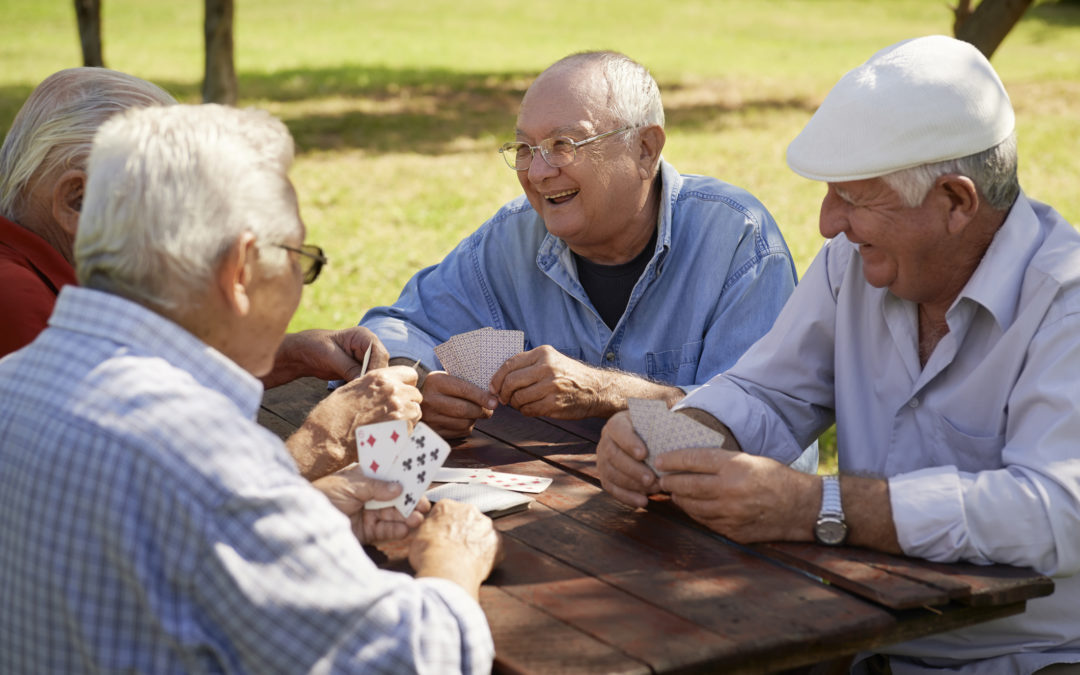 The Art of Engagement
The Art of Engagement
by Debbie Hommel, ACC/MC/EDU, CTRS
The room is full of people. Music is playing. Activity items are on the tables. Staff are in the room. But are the people engaged? Are they participating? Or are they just there? This is the question being presented to many activity professionals today – are your folks engaged? When the people join our programs, we can categorize them into three levels of involvement.
“Attendance” simply means they have agreed to join the program but this does not imply any level of involvement.
“Participation” is one step up from attendance, whereby the person may join in, take a turn, or share a thought.
“Engagement” is what we are all striving for and may be the hardest to attain when presented with some of the cognitive and physical challenges of our participants.
Engagement implies a deeper focus and attention to the program. The person is attending to the subject matter, is listening to others and interested what they say and may be independently focused on the task at hand. Mihaly Csikszentmihalyi, a Hungarian psychologist, is known for his research on creativity and happiness. Czikszentmihalyi defined “flow” as being fully immersed in a task with an energized focus which brings about some enjoyment. It is sometimes referred to as being “in the zone”. Can we hope to engage our elders with a sense of flow? Have you even seen your participants be “in the zone” during a particular activity? It is possible but requires the following approaches, all within reach of the activity professional.
Assessment: The first step to engage interest in any activity is to ensure the activity/approach is relevant to the individual’s past/current interests and needs. A thorough and individualized assessment is essential in designing the right approaches that may generate a sincere focus on the participant’s part. A good example is music. If someone likes music, there is a broad spectrum of music to offer. We all know when the right song is played (related to interests and preferences); the eyes light up and the body may start moving in response. Those are examples of engagement within an individualized approach, which was achieved by knowing the right kind of music to play as defined through a thorough assessment.
Success: Another step toward engagement is to feel good about participation. If the task is too hard or it has been made too easy, feelings of enjoyment will be less. The activity professional has the ability to adapt approaches through tools or devices and changing the rules or approach. When one is able to fully participate in a task, it leads to a fuller immersion which contributes to greater satisfaction and enjoyment.
Milieu: Milieu is defined as one’s surroundings – physical, social and cultural. The movement toward creating “home” in our care communities is striving to create a conducive milieu for our elders and other individuals who reside in our communities. People are more apt to relax and participate in tasks while in a setting that feels safe and where one feels they belong. The spaces in which we conduct our programs have a significant impact upon our success in engaging the participant. The people who work in our communities are part of the social milieu when they interact with the residents. The staff can have both a positive and negative impact upon the life of the home, in both engagement and life satisfaction.
Approach: The elders in our care communities are there because they are compromised physically and mentally. How tasks are introduced can impact significantly on how the elder is engaged in the task. When tasks are just placed in front of the person or the person is simply told to do a certain task, the meaning is not there and engagement is lost. Connecting the task to the person and defining its significance can contribute to greater involvement and engagement. When the person understands why they are doing the task and how it is relevant to them, it will have greater meaning and potential for engagement.
Balance: Many elders in our care communities are in danger of over stimulation. It is not uncommon for residents in care communities to attend 4-6 hours of structured activities per day. Think of yourself and your ability to remain focused for that amount of time. There needs to be a balance between focused time and periods of quiet and rest. One can be as readily engaged in a quiet meditation group as well as a lively active game of bowling. The people living in our long term care communities need someone to ensure they have that balance so they can more readily focus on the tasks at hand.
The elders ability to engage in activities and tasks may change daily. It is the activity professionals’ challenge to utilize our skills and knowledge to individualize our approaches to enable meaningful engagement. We must also educate others as to what engagement truly means and that to each person, it may be different.
Information about Czikszentmihalyi and his concept of flow can be found in the independent study program
“Quality of Life for the Care Giver and Care Receiver”.

